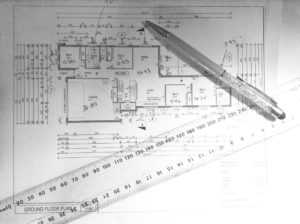The National Construction Code of Australia (NCC) provides a few different ways for the Energy Efficiency Performance Provisions to be satisfied.
The two main methods used are:
1. “Deemed to Satisfy – Elemental Provisions”
This method is often referred to as “Deemed To Satisfy” or DTS.
This method assessess each of the individual elements in your build to ensure that they satisfy the Energy Efficiency provisions in the NCC. These elements include the Total R-Value (or thermal resistance value) of the roof, the walls and in some cases the floors, as well as ensuring that your glazing and ventilation comply with the provisions.
This is a quick and simple method for assessing compliance for your build. The advantages are that the assessment is usually cheaper to obtain, and sometimes will result in less expensive building materials being required (for example, R1.5 in your walls, rather than a higher value). This method is the best method to use for alterations and additions, as in most cases only the new elements will need to be assessed and achieve compliance.
The disadvantage with this method is that every element needs to comply with the miniumum standard, and so there is not the flexibility to consider the whole house and ‘trade-off’ better performing elements against lower performing elements as with the Energy Rating Method.
2. “Deemed to Satisfy – Energy Rating”
This method is referred to as NatHERS Rating, NatHERS Assessment, Star Rating or the Software Rating Method.
With the Energy Rating method, every element of the build is entered into energy-use modelling software approved by the National House Energy Rating Scheme (NatHERS). The software models the energy required to heat or cool every habitable room in the home to a comfortable temperature across every hour of every day in the year. It takes into account many other factors such as the climate, the orientation, the breezes, the building materials, the colour of the roof, and so on. The result is an area-adjusted figure of how much energy your particular design will use across a year in heating and cooling. This figure is then converted to a Star Rating out of ten. Currently, the NCC requires a 6 Star Rating in most situations, although credits are given for some additional elements such as qualifying outdoor living areas in warmer climates.
With the Star Rating method, a NatHERS Certificate is produced giving guidance to your builders for every relevant element in your build. It will contain the following summary symbol.
The Star Rating Method is a much more accurate and informative method for predicting energy-use in heating a home. Much more flexibility is given to home builders to compensate for specific design choices. For example, in hotter climates, lighter coloured roofs are recommeded to achieve a better Energy Rating, (as they absorb less Solar Heat than a darker colour). However, if a client wanted a dark colour roof, the Energy Consultant could model this and compensate for it by increasing the insulation required in the walls or improving the quality of the glazing required, so that the house used the same amount of energy to heat and cool as if it had the lighter roof. With the Software, it is possible to easily change particular elements to see the effect they have on the Energy Rating. For clients who are wishing to achieve an Energy-efficient home with a high Energy Rating and low running costs, this is usually the best method to use.
Which Energy Assessment method should I choose for my build?
This is a broad description of the two common methods for obtaining compliance. Differences exist in different States and Territories, (for example, NSW incorporates the both of these methods within their BASIX system of Energy Assessmnet), and there are elements that may be present in a particular design that would make one method more suitable than another. However, both methods will give your build an Energy Assessment.
While you may hear from your builder, certifier or friends that you need to get an Energy Rating, remember that both methods outlined above are acceptable to your Certifier for compliance with the Energy Efficiency Provisions of the NCC, as long as the assessment is undertaken by a competent person (usually defined as someone who has obtained a Cert IV in NatHERS Assessment, but some States also require Accreditation with ABSA or BDAV).
BERA is able to competently assess which would be the best method for obtaining compliance for your specific build. If you have any further questions, please contact us for a discussion about which Energy Assessment method will be most suitable for your plans.

